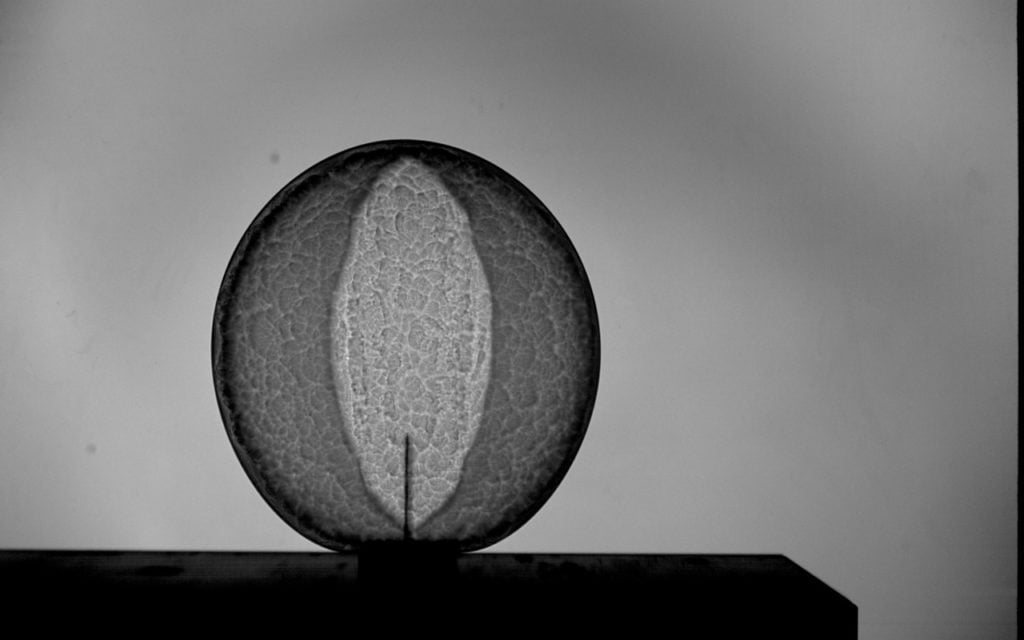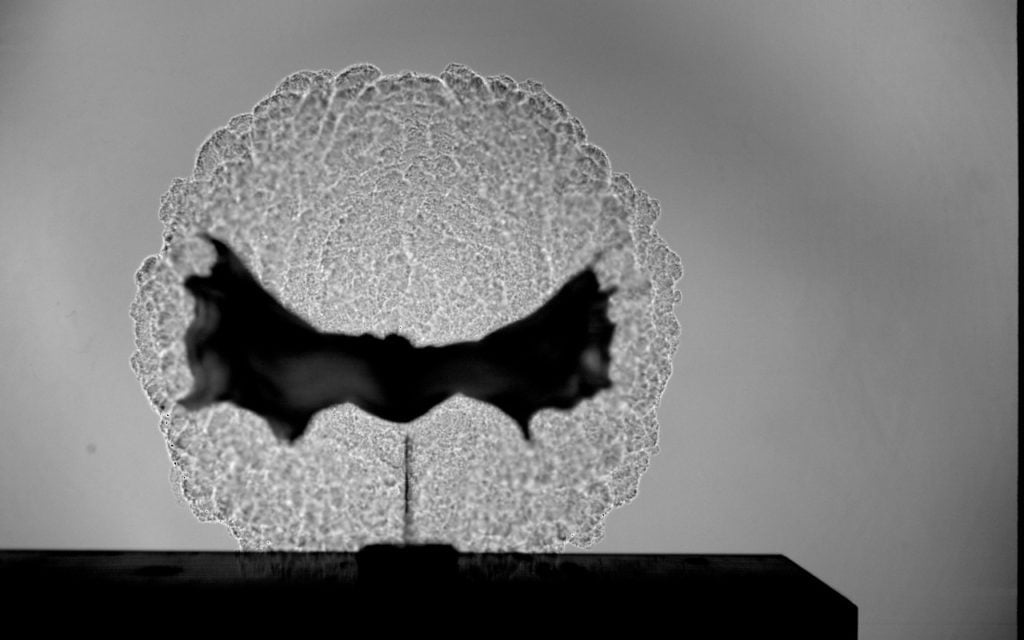Removing the slug does not make a bullet harmless, as the Slow Mo Guys demonstrate in this video. They’re shooting blanks — casings that still contain propellant but no projectile. There’s still more than enough force to obliterate an egg, lunch meat, and water balloons. You really don’t want one of these fired near you.
It looks as though the burning propellant is generally the first thing to puncture in each of these. Then the gas from the explosion blows the rest of the object away. The most interesting segment, to me, was the final (pink) water balloon, where the blast wave and its aftermath are visible in a schlieren-like effect that passes over the balloon before its destruction. The sun must have been at just the right position relative to their set-up. (Video and image credit: The Slow Mo Guys)









